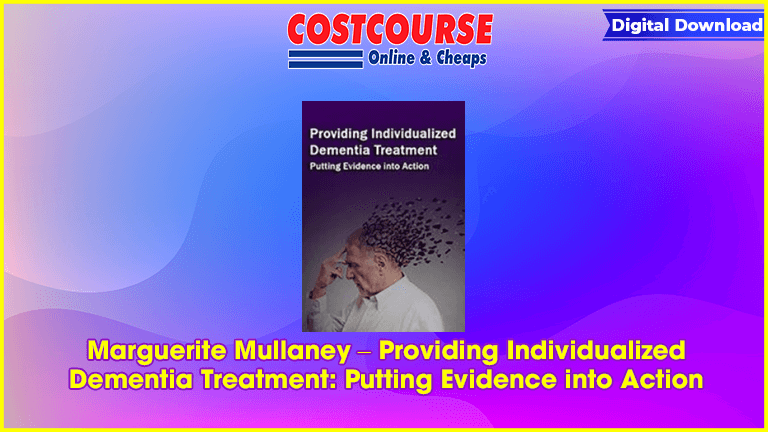Description
Working with patients with dementia can be like talking on the phone with a bad connection – maybe some words get through, but maybe they don’t. For patients, it’s a call that never ends, and over time, behaviors such as wandering, aggression, and social withdrawal can take root with the decline of communication abilities.
Marguerite Mullaney – Providing Individualized Dementia Treatment: Putting Evidence into Action
Where one-size-fits-all treatment protocols fail, individualized care can help patients communicate their wants and needs, as well as function in daily situations.
This seminar offers an exploration of the latest evidence-based treatments. Explore effective strategies for restoring impaired function and compensating for deficits that are not amenable to retraining. Learn cognition-focused interventions that have been shown to improve cognitive skills, functional abilities, and performance-based activities of daily living with lasting outcomes. See how to select assistive technologies and external memory aids based on your patients’ needs, and discover which options on the market work best.
Finally, this course will show you how to think “outside the box†and design custom therapies using what you have on hand, offering effective take-home solutions for clinicians who are working on a tight budget, or are frustrated with the limitations of generalizing products and techniques.
Handouts
Manual – Providing Individualized Dementia Treatment (1.50 MB) 54 Pages Available after Purchase
Outline
INTRODUCTION: GETTING ON THE SAME PAGE
Neurological changes
Behavioral changes
Theories for intervention
Staging a hypothetical patient
Physical changes
Cognitive changes
ASSESSMENT
Logemann approach
Standardized testing
Informal assessment
Measuring the patient’s perspective
Measuring the caregiver’s perspective
Sorting the strengths from the weaknesses
TREATMENT: PART 1
Deciding what to work on
Application of neuroplasticity concepts
Hildred Schuell’s hierarchy
Commercially available products
Thinking outside the box
Participant hypothetical examples
TREATMENT: PART 2
Interactive case studies
Interventions: compensatory vs. restorative strategies
Cognition-focused interventions
Limitations of generalization and long-term maintenance
Assistive technology
Cognitive stimulation therapy
External memory aids
Memory-training programs
Spaced retrieval
Errorless learning
Procedural memory stimulation
Vanishing cues
Didactic approaches
Reality orientation
Reminiscence therapy
Simulated presence therapy
Develop a POC to address the above examples
Participant hypothetical examples
DESIGNING TREATMENT
Case study: complete a comprehensive cognitive/communication exam
Create an individual treatment approach
Case study: patient with SLUMS score of 21/30; Global Deterioration Scale of 3








